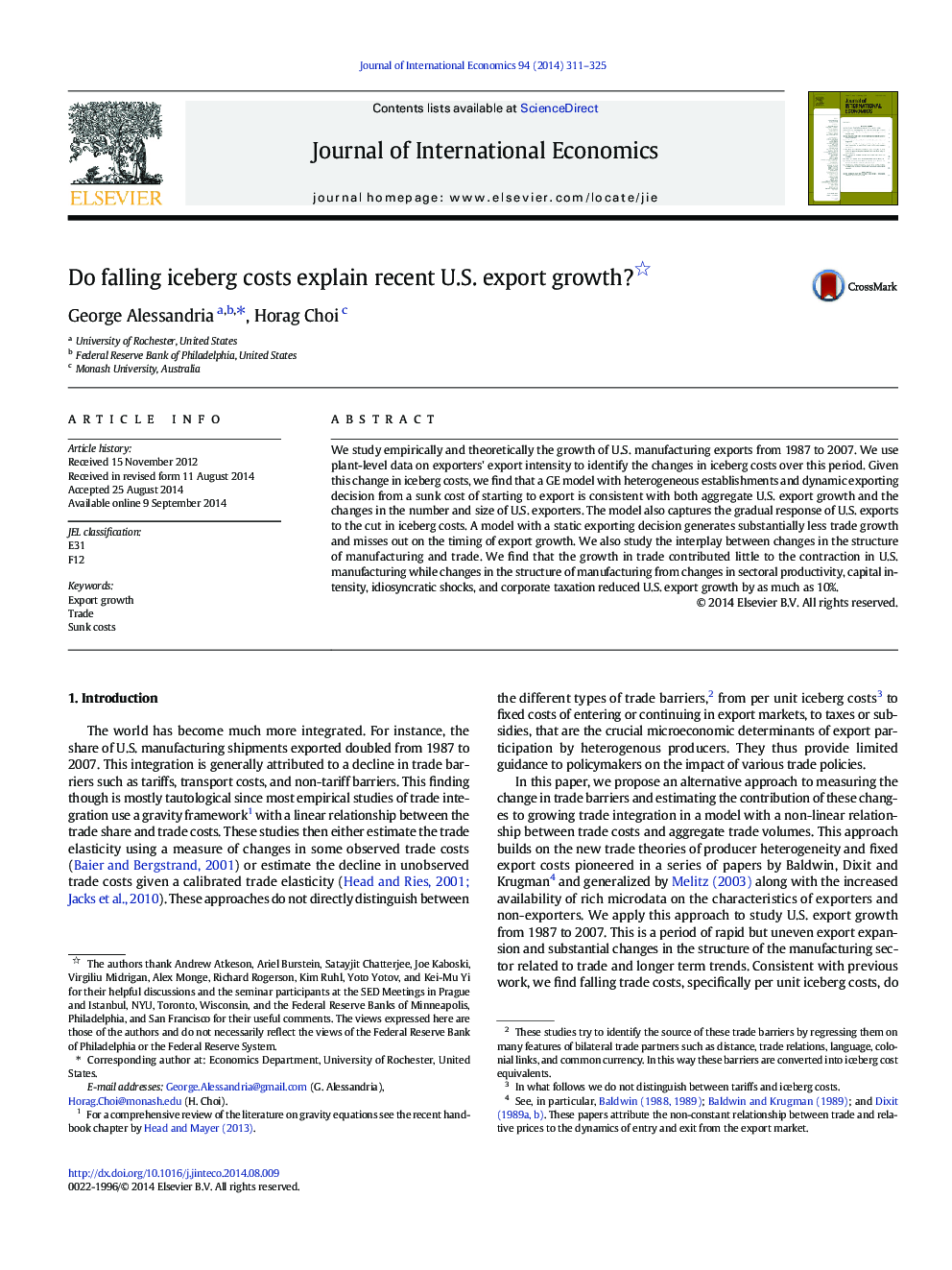| Article ID | Journal | Published Year | Pages | File Type |
|---|---|---|---|---|
| 962954 | Journal of International Economics | 2014 | 15 Pages |
Abstract
We study empirically and theoretically the growth of U.S. manufacturing exports from 1987 to 2007. We use plant-level data on exporters' export intensity to identify the changes in iceberg costs over this period. Given this change in iceberg costs, we find that a GE model with heterogeneous establishments and dynamic exporting decision from a sunk cost of starting to export is consistent with both aggregate U.S. export growth and the changes in the number and size of U.S. exporters. The model also captures the gradual response of U.S. exports to the cut in iceberg costs. A model with a static exporting decision generates substantially less trade growth and misses out on the timing of export growth. We also study the interplay between changes in the structure of manufacturing and trade. We find that the growth in trade contributed little to the contraction in U.S. manufacturing while changes in the structure of manufacturing from changes in sectoral productivity, capital intensity, idiosyncratic shocks, and corporate taxation reduced U.S. export growth by as much as 10%.
Keywords
Related Topics
Social Sciences and Humanities
Economics, Econometrics and Finance
Economics and Econometrics
Authors
George Alessandria, Horag Choi,
